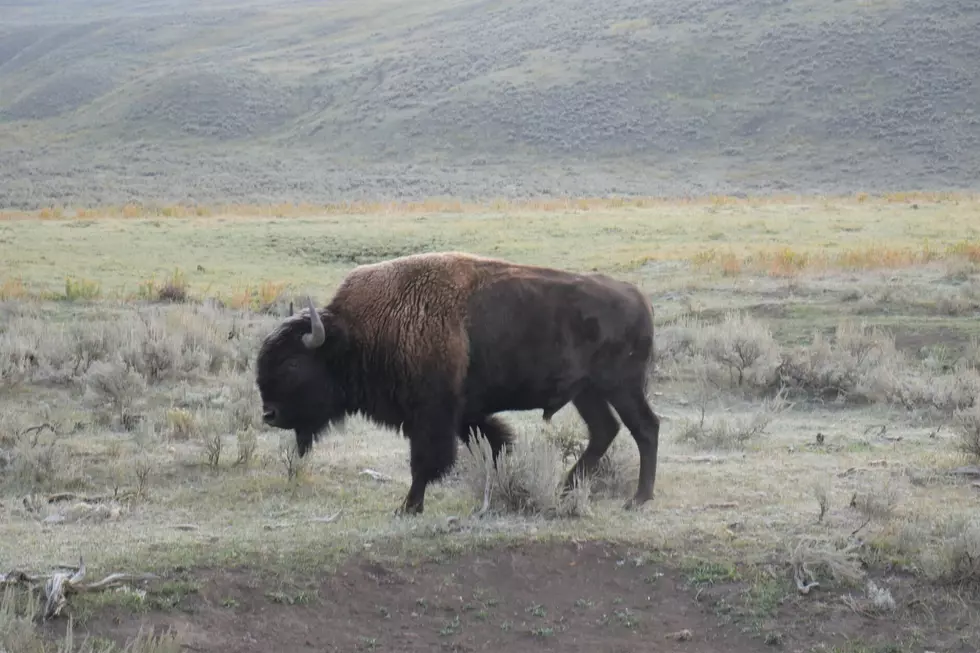
Ninth Circuit urged to address Montana bison hunt
(CN) — For the last decade, the government has allowed an annual bison hunt in a tiny gulch outside Yellowstone National Park that kills nearly 10% of Yellowstone’s wild bison population. And the hunt happens just outside the park, in a neighborhood where people say bullets whiz past their homes.
Bison migrate out of Yellowstone National Park each winter, searching for grass and forage. Based on an Interagency Bison Management Plan developed in 2000, the state of Montana and the federal government encourage hunters to kill migrating bison in Beattie Gulch, an area adjacent to the park, before the animals range into cattle ranching territory.
But that hunt has grown over the years, far exceeding the 85 bison initially approved for hunting each year. Now, the government allows the killing of 486 bison per year. All in a quarter-square-mile area at the mouth of Beattie Gulch.
Bonnie Lynn, founder of Neighbors Against Bison Slaughter, owns two cabins in a condominium complex along the Yellowstone River, just across the road from where the annual hunt happens. She says in her lawsuit against federal defendants including the National Park Service that she is scared she or her family could be killed by flying bullets.
“We believe in hunting for subsistence and for meat. But the hunting here has stepped over the line to threaten the safety and peace of the neighborhood. The hunting creates a public safety hazard, risks the lives of the neighbors and their property, and upsets our way of life,” Lynn says in the lawsuit.
Montana Fish & Wildlife recognized that "‘occasional stray bullets can threaten [residents’] safety or damage their homes,’” according to the complaint, but it didn’t halt, move or restrict the annual bison hunt in response to the complaints of Beattie Gulch residents who live several hundred yards from the hunting area.
The government says the hunt is necessary in part to prevent bison from infecting cattle with brucellosis, a disease accidentally imported from Europe that causes spontaneous abortions in cows. But in another case argued before the Ninth Circuit on Friday, Cottonwood Environmental Law Center says the risk of transmission is extremely low because cows would have to eat grass where an infected bison had just given birth.
Cottonwood says such a case has never been documented. Instead, Cottonwood says, transmission is coming from elk, which are allowed to freely roam the area. But the government continues to allow hunting and hazing of bison based on its flawed logic, Cottonwood says.
Based on the two lawsuits, the government agreed to voluntarily reassess its management plan for bison. But both Lynn and Cottonwood say that’s not enough. They appealed a federal judge's approval of the agencies’ request to allow them to take the plan back into their own hands for revision.
On Friday, the plaintiffs asked a three-judge Ninth Circuit panel to issue deadlines for a revised analysis under the National Environmental Policy Act. Senior U.S. Judge Richard K. Eaton, a Bill Clinton appointee sitting by designation from the U.S. Court of International Trade, seemed sympathetic to the claims of Lynn and the other residents of Beattie Gulch.
“You don’t have to convince me that the government has treated your clients pretty badly,” Eaton said. “And that the government delayed unconscionably in starting this whole process and that if you hadn’t started your lawsuit, we would still be waiting for the publication of this notice. Nonetheless, I wonder if, as a matter of law, we can direct them to complete the environmental impact statement by the date that you want them to.”
Lynn's attorney Matt Thurlow said the government has promised a revised plan before but has never delivered one. He asked the court to impose a two-year deadline.
“I think the court needs to enter a deadline in order to guarantee that we’re going to have some action,” Thurlow told Eaton.
He continued: “I just want to remind the court that there are real world impacts for this case. My client is 78 years old and she has waited 10 years for this 10-minute argument. She suffered real-world impacts including hundreds of bison being killed on her doorstep, in her neighborhood. Bullets coming across the road, in front of her home and her neighbor’s home. Bison guts across the landscape — this concentrated hunt in a few acres of land in front of her property has gone on for 10 years, without any analysis, without any public comment. The agencies have just done whatever they wanted.”
Arguing for the federal agencies, attorney Erika Kranz disputed the idea that the government might drag its feet.
“The work is happening,” Kranz said. “It is going to happen. I do not think any suspicion about whether that work is going to happen is warranted.”
Wild bison should be allowed to roam freely on federal land outside Yellowstone — including Beattie Gulch, which lies within the Gallatin National Forest, according to John Meyer, attorney for Cottonwood Environmental Law Center.
Meyer said Montana state agencies claim they can haze bison on federal land to force them away from cattle ranches and back toward Yellowstone.
“The government says letting bison roam free would create safety concerns,” Meyer said. “The truth is, there are already huge safety issues. There are people shooting across roads. There are people shooting near houses. Millions of bison used to roam across the state of Montana. Today we have fewer than 6,000 in a tiny area right outside Yellowstone National Park.”
U.S. Circuit Judges Richard Paez and Jacqueline Nguyen, Clinton and Barack Obama appointees, respectively, rounded out the panel. The judges did not indicate when they would issue a ruling.
